Photos: Deep-Sea Shark Migrations Captured with Fin-Mounted Cameras
Researchers at the University of Hawaii and the University of Tokyo studied sharks' swimming habits using fin-mounted cameras. This novel approach helped them discover surprising new details about what keeps these predators afloat. Sharks were thought to be negatively buoyant (meaning they have a natural tendency to sink) or neutrally buoyant (meaning their buoyancy is canceled out by their weight in the water), but the scientists were surprised to discover that two species of deep-sea sharks have some positive buoyancy that pushes them toward the surface. [Read full story about sharks' buoyancy]
A new perspective
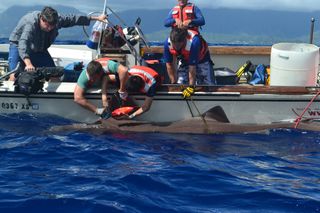
The scientists attached a camera and sensors to the fins of two kinds of deep-sea sharks and tracked them for five to 10 days as they moved up and down through different ocean depths. (Photo credit: Calorina Pacheco/Ocean Mysteries)
Technology at work
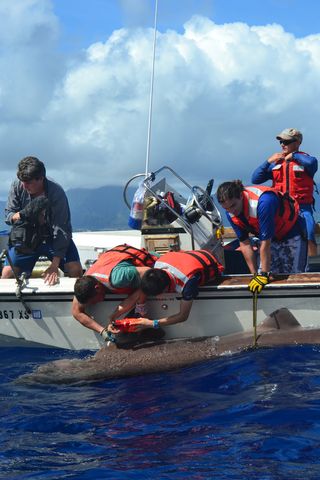
The equipment package was attached using a thin metal band that was looped through a hole punched in the shark's pectoral fin. After a preset amount of time (five or 10 days), the metal band breaks open and the equipment floats to the surface, where the scientists can recover it. (Photo credit: Calorina Pacheco/Ocean Mysteries)
Seeking a deeper understanding
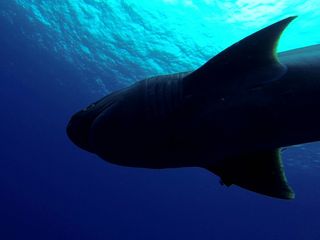
Both types of deep-sea sharks studied — sixgill sharks and prickly sharks — move through the water column during the day, spending daytimes in the deep and returning to shallower waters around sunset. Scientists are still working to understand the purpose of these daily migrations. (Photo credit: Mark Royer/University of Hawaii)
Sign up for the Live Science daily newsletter now
Get the world’s most fascinating discoveries delivered straight to your inbox.
Tracking migration
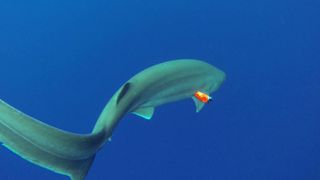
The flashlight-size camera captured images every 30 seconds while the sharks were swimming. When combined with data from the accelerometer and magnetometer, the scientists were able to figure out that the sharks had to work hard to dive down, but they could easily glide back toward the surface. (Photo credit: Mark Royer/University of Hawaii)
Data, data, data
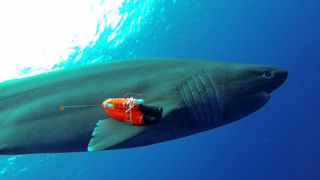
Six sharks were studied, with a total of 36 days of swimming data recorded. The researchers think that other deep-sea creatures may also be positively buoyant. (Photo credit: Mark Royer/University of Hawaii)
In search of dinner

Sixgill and prickly sharks prey on large fish and also on other small sharks — especially the babies of other sharks — in Hawaii. (Photo credit: Mark Royer/University of Hawaii)
Large creatures
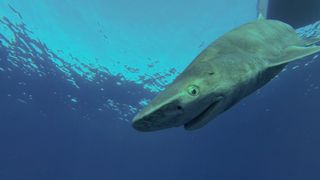
Prickly sharks grow to be 13 feet (4 meters) long, and sixgill sharks grow to be more than 16 feet (4.9 m) long. (Photo credit: Mark Royer/University of Hawaii)
A large habitat
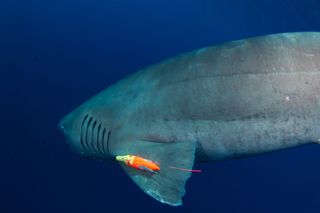
Sixgill sharks have the widest distribution of all sharks, possibly except for great white sharks, the researchers said. Sixgill sharks are found all over the world in temperate and tropical regions, where they have been known to dive as deep as 6,000 feet (1,800 m). They are more typically found at depths of about 300 feet (90 m). (Photo credit: Steve Kajiura/FAU)
The last of its kind
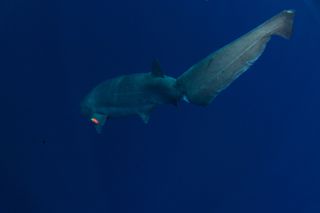
Many relatives of the sixgill shark are extinct. In fact, it has more close relatives in the fossil record than living relatives, researchers said. The related living species include the dogfish, the Greenland shark, and other six- and seven-gilled sharks. Some of the shark's relatives date back 200 million years, to the Triassic period. (Photo credit: Steve Kajiura/FAU)
Antisocial animals
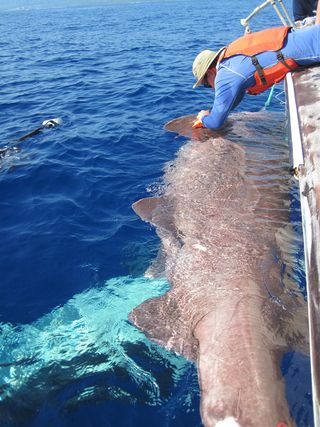
Sixgill sharks are generally solitary creatures. (Photo credit: Steve Kajiura/FAU)
The equipment
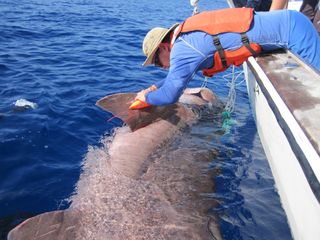
The cameras hitched a ride on the sharks for five to 10 days, before they automatically detached and rose to the ocean's surface. (Photo credit: Steve Kajiura/FAU)
Follow us @livescience, Facebook & Google+.
Most Popular

